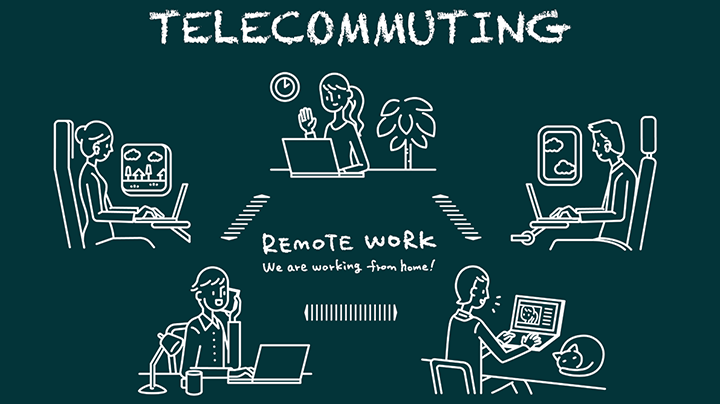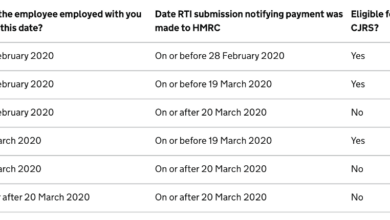
Telecommuting Essentials During Coronavirus Crisis
Telecommuting essentials during coronavirus crisis is crucial for navigating the new normal of remote work. This guide dives deep into the vital tools and strategies needed to thrive in a home-based workspace, from top-notch hardware to seamless communication, security, and maintaining work-life balance.
This comprehensive resource explores the essential elements for a successful remote work experience during the crisis. It covers everything from choosing the right equipment and reliable internet to mastering communication tools and prioritizing security. The guide will equip you with the knowledge and practical tips to create a productive, comfortable, and secure remote workspace.
Essential Hardware for Remote Work
Working from home has become the new normal for many, and setting up a productive and comfortable remote workspace is crucial for success. Investing in the right hardware can significantly improve your workflow, reduce distractions, and enhance overall well-being during the workday. This article will delve into the essential hardware components needed for a top-notch home office, covering key features, ergonomic considerations, and different options to help you choose the best equipment.A well-equipped home office setup is more than just a collection of devices; it’s a carefully curated environment that promotes focus, efficiency, and comfort.
By understanding the specific needs of remote work and selecting the right hardware, you can transform your home space into a productive and enjoyable work zone.
Essential Display Devices
Choosing the right monitor is crucial for a comfortable and productive remote work experience. Monitor size, resolution, and type significantly impact visual comfort and task completion. A good monitor provides clarity and reduces eye strain.
- Monitor Size: A larger screen size allows for multiple applications and windows to be visible simultaneously, enhancing productivity and multitasking. A 27-inch monitor is a popular choice for many remote workers, offering a good balance between screen size and space-saving capabilities.
- Resolution: High resolution monitors display sharper text and images, reducing eye strain during extended use. A resolution of 1920×1080 pixels or higher is generally recommended for comfortable viewing.
- Monitor Type: Different monitor types (e.g., LED, OLED, IPS) offer varying levels of color accuracy, response time, and viewing angles. Consider factors such as the type of work you do and your budget when selecting the appropriate type.
Essential Input Devices
Effective input devices like keyboards and mice are vital for efficient remote work. A comfortable and well-designed input system contributes significantly to productivity.
- Keyboards: Ergonomic keyboards are designed to reduce strain on wrists and hands, promoting a healthier work posture. Mechanical keyboards offer a tactile feedback experience, improving typing speed and accuracy.
- Mice: Ergonomic mice designed with curved shapes and adjustable features reduce strain on hands and wrists, contributing to better comfort and productivity. Wireless mice provide the freedom to move around your workspace without being tethered.
Essential Communication Devices
Effective communication tools are essential for remote workers. High-quality audio and video are key to maintaining professional connections.
- Webcams: High-definition webcams with adjustable angles and clear audio capabilities are important for video conferencing and virtual meetings. A clear and stable video connection ensures effective communication with colleagues and clients.
- Headsets: High-quality headsets with noise-canceling features provide a clear and uninterrupted audio experience during calls and meetings. A headset is a valuable asset for minimizing distractions and ensuring effective communication.
Ergonomic Considerations
Ergonomics plays a critical role in maintaining comfort and preventing health issues related to prolonged sitting.
- Posture: Maintaining proper posture during remote work is crucial for preventing back pain, neck pain, and other discomfort. An adjustable chair and a well-positioned monitor are important for achieving optimal posture.
- Comfort: A comfortable and supportive chair that allows for adjustable height and lumbar support is crucial for minimizing discomfort during long working hours. Adequate lighting and a well-ventilated workspace are also important factors to consider.
Monitor Comparison
| Monitor Type | Pros | Cons |
|---|---|---|
| LED | Affordable, energy-efficient, good brightness | May have a slightly less accurate color representation |
| OLED | Excellent color accuracy, deep blacks, high contrast | More expensive, potentially higher power consumption |
| IPS | Wide viewing angles, good color accuracy | Slightly slower response time compared to others |
Input Device Comparison
| Input Device | Ideal Characteristics |
|---|---|
| Keyboard | Ergonomic design, comfortable keystrokes, adjustable features |
| Mouse | Ergonomic shape, adjustable features, wireless connectivity |
Connectivity and Internet Access
Reliable internet access is paramount for effective telecommuting, especially during a crisis like the coronavirus pandemic. A stable connection ensures smooth communication with colleagues, seamless video conferencing, and uninterrupted access to essential online resources. This is crucial for maintaining productivity and continuity of operations in a remote work environment.
Importance of Reliable Internet Access
The importance of reliable internet access cannot be overstated in the current context. A consistent, high-speed connection is essential for maintaining productivity and effective communication in a remote work environment. Without it, video conferences can be disrupted, important documents cannot be accessed promptly, and collaboration becomes significantly more challenging.
Different Internet Connection Types
Various internet connection types cater to different needs and budgets. Understanding the suitability of each type for remote work is crucial.
- DSL (Digital Subscriber Line): DSL connections, while affordable, often have limited bandwidth and speed, which can be a significant bottleneck for demanding remote work tasks like video conferencing or large file transfers. Their reliability can also be affected by distance from the telephone exchange.
- Cable Internet: Cable internet offers relatively higher bandwidth than DSL and is suitable for most remote work scenarios. The speed and reliability vary depending on the distance from the cable company’s infrastructure.
- Fiber Optic Internet: Fiber optic connections offer the highest speeds and reliability, making them ideal for high-bandwidth tasks and multiple concurrent users. They are generally the most expensive option but are becoming increasingly accessible.
Internet Connectivity Challenges
The coronavirus crisis has brought about increased internet usage, leading to potential challenges. Overcrowded networks and increased demand can result in slower speeds and connectivity issues.
- Increased Demand: Increased internet usage during the pandemic has led to network congestion, resulting in slower speeds and intermittent connectivity problems. This is particularly noticeable in areas with limited infrastructure.
- Network Congestion: During peak hours, the network might become congested, leading to lower speeds and frequent disconnections. This is especially true in densely populated areas and during periods of increased remote work.
- Infrastructure Limitations: Older infrastructure in some areas might struggle to handle the increased demand. This can result in inconsistent internet speeds and connectivity issues, particularly in rural or underserved communities.
Strategies to Overcome Connectivity Challenges
Strategies to mitigate these challenges include:
- Utilizing alternative access points: If possible, using a secondary internet connection, such as a mobile hotspot, can provide backup in case of a primary connection failure. This is especially useful for video conferencing or crucial tasks.
- Choosing optimal connection times: Avoid peak hours, if possible, for internet use. Working during less congested periods can often result in a more stable connection.
- Contacting the internet provider: If experiencing persistent connectivity issues, contact the internet service provider (ISP) for troubleshooting and support.
Optimizing Internet Speed, Telecommuting essentials during coronavirus crisis
Optimizing internet speed for remote work involves several strategies.
- Identifying Bottlenecks: Identify applications or programs that might be consuming a large amount of bandwidth. For example, a high-resolution video stream might be a significant bandwidth consumer.
- Using a Speed Test: Employ online speed test tools to determine the actual speed of your internet connection. This can help pinpoint potential problems and assess whether your connection is meeting your needs.
- Troubleshooting Techniques: Common troubleshooting techniques include checking network cables, restarting your modem and router, and ensuring that other devices aren’t consuming significant bandwidth.
Improving Home Internet Security
Securing your home internet is crucial during remote work. Cybersecurity threats increase with increased remote work.
- Strong Passwords: Using strong, unique passwords for your Wi-Fi network and other accounts is essential to prevent unauthorized access.
- Firewall Protection: Enable a firewall on your router to block unauthorized access and protect your network from potential intrusions.
- Regular Software Updates: Keep your operating system and other software updated with the latest security patches to protect against known vulnerabilities.
Software and Applications for Remote Work
Navigating the remote work landscape effectively requires more than just reliable hardware and a stable internet connection. The right software and applications are crucial for seamless communication, collaboration, and project management. This becomes even more vital during times of crisis, when teams need to stay connected and productive from various locations. Effective remote work relies on the right digital tools.The transition to remote work has accelerated the adoption of various software solutions, demonstrating their crucial role in maintaining productivity and team cohesion.
The pandemic significantly accelerated this shift, with businesses and individuals rapidly adapting to virtual environments. The right software empowers remote workers to accomplish tasks effectively, even when geographically dispersed.
Essential Communication Tools
Effective communication is paramount for remote teams. Reliable communication platforms facilitate seamless interaction and collaboration, minimizing misunderstandings and maximizing efficiency. These tools bridge the gap between physical locations, ensuring teams can connect and work together productively.
- Video Conferencing Platforms: Tools like Zoom, Google Meet, and Microsoft Teams enable real-time video calls, fostering a sense of presence and facilitating direct interaction. These platforms are indispensable for team meetings, brainstorming sessions, and one-on-one discussions.
- Instant Messaging Platforms: Slack, Microsoft Teams, and Discord provide instant messaging capabilities, enabling quick communication and file sharing. This facilitates real-time feedback, quick questions, and immediate responses, streamlining communication flows.
Project Management Tools
Effective project management is critical for maintaining momentum and achieving goals in remote work environments. Project management tools help organize tasks, track progress, and ensure accountability across dispersed teams.
- Asana, Trello, and Monday.com: These platforms provide visual task boards, allowing teams to organize projects, assign tasks, track deadlines, and monitor progress. The visual nature of these tools is particularly helpful for remote teams, allowing for transparency and clear accountability.
- Jira and Monday.com: These tools are often used for agile project management. They help teams break down projects into smaller tasks, track progress, and adapt to changes in a dynamic environment. These are useful for complex projects requiring frequent adjustments and collaboration.
Security Software
Data security is paramount in any work environment, but it takes on heightened importance in remote work settings. Protecting sensitive information is critical to maintaining trust and preventing breaches.
- Antivirus and Anti-malware Software: Protecting computers from viruses, malware, and other threats is crucial to safeguarding data and preventing disruptions to remote work. Strong security measures protect sensitive information from unauthorized access.
- VPN (Virtual Private Network): VPNs encrypt internet traffic, creating a secure connection between remote workers and company networks. They are essential for accessing sensitive company resources securely from public Wi-Fi networks, protecting sensitive data.
Video Conferencing Tool Comparison
Different video conferencing tools offer various features. Choosing the right tool depends on the specific needs of the team.
| Tool | Key Features | Pros | Cons |
|---|---|---|---|
| Zoom | Screen sharing, breakout rooms, recording | User-friendly, widely used, robust features | Potential for security concerns, sometimes lag |
| Google Meet | Integration with Google Workspace, free tier | Ease of use, integrated with other Google services, free option | Features might be less comprehensive compared to Zoom |
| Microsoft Teams | Collaboration features, integration with Office 365 | Excellent integration with other Microsoft tools, strong collaboration features | Requires Microsoft 365 subscription |
Productivity Apps
Productivity apps streamline task management and organization in remote work settings. These tools are essential for staying organized and focused.
- Evernote and OneNote: These note-taking apps help organize thoughts, ideas, and meeting notes. They can improve efficiency by providing a centralized location for storing important information.
- Toggl Track and Clockify: These time-tracking apps help monitor work hours and project progress, which can be especially valuable for remote teams, especially in project-based work.
Remote Work Environment Setup

Establishing a dedicated workspace at home is crucial for maintaining focus and productivity during the coronavirus crisis. A designated area promotes a clear separation between work and personal life, which is vital for mental well-being and efficiency. This dedicated space acts as a professional environment, helping to minimize distractions and maximize concentration. It fosters a routine and structure that can be essential for maintaining a sense of normalcy and control in a period of significant change.A dedicated home office helps create mental boundaries and supports the transition to a remote work environment.
It reduces the likelihood of blurring work and personal time, promoting a more balanced lifestyle. By clearly defining a workspace, individuals can better manage their time and tasks, enhancing overall productivity and well-being.
Creating a Dedicated Workspace
A dedicated workspace is more than just a corner; it’s a structured environment that facilitates focused work. It establishes a mental separation between work and personal activities, fostering a more productive mindset. This is particularly important during times of crisis, when maintaining a sense of normalcy and routine is critical.
- Choose a quiet location: Select a room or area that minimizes distractions. Consider factors like noise levels, family activities, and outside interruptions. A spare room or a designated corner in a living area can work well. The ideal location is free from interruptions, allowing for uninterrupted work sessions.
- Optimize lighting and comfort: Ensure adequate lighting for comfortable work. Natural light is ideal, but supplemental lighting is important if natural light is limited. An ergonomic chair and a desk that supports good posture are essential for physical well-being and avoiding discomfort during prolonged work hours. A comfortable temperature and adequate ventilation also contribute to a productive workspace.
- Declutter and organize: A clean and organized workspace contributes to a clear mind. A tidy environment promotes focus and reduces the mental clutter that can hinder productivity. Store items that aren’t immediately needed to minimize visual distractions.
Minimizing Distractions
Minimizing distractions is key to maintaining focus and productivity in a home office environment. This involves proactive measures to control interruptions and create a conducive atmosphere for deep work. Effective strategies for minimizing distractions help maintain a consistent work flow, reducing stress and improving output.
- Establish a routine: Set clear work hours and stick to them as much as possible. This helps maintain a sense of structure and regularity, mimicking a traditional office environment. This structure can enhance focus and productivity.
- Communicate boundaries: Inform family members or housemates about work hours and the need for minimal interruptions during those times. Clearly communicating these boundaries helps everyone respect the need for uninterrupted work time.
- Utilize noise-canceling headphones or white noise machines: These tools can help block out distracting sounds, creating a more focused environment. This is particularly helpful in households with children or other individuals who might create interruptions.
- Turn off social media and notifications: Distractions from social media and other notifications can easily derail focus. Actively minimizing these distractions will help maintain a focused workflow.
Creating a Professional Environment
Creating a professional environment at home is essential for maintaining a sense of structure and professionalism during remote work. This is critical for maintaining work-life balance and avoiding burnout. A dedicated space signals the start of the work day, which is important for establishing focus and productivity.
- Maintain a professional appearance: Even though working from home, maintain a professional demeanor and appearance. This can include dressing professionally for work, or creating a space that reflects a professional environment. This contributes to maintaining focus and productivity. It can also improve morale and reduce the risk of distractions.
- Invest in essential office supplies: A well-stocked workspace with necessary supplies, like pens, paper, and other office tools, can enhance productivity and reduce interruptions. It contributes to a more organized and efficient workflow.
- Consider using virtual backgrounds: Virtual backgrounds for video calls can help create a professional environment that minimizes personal details from view. This can help maintain focus during video conferencing.
Managing Home Office Space for Different Needs
Different needs require tailored home office setups. Work-life balance is crucial, and creating a space that accommodates personal and professional needs is important. A well-designed home office can facilitate a healthy work-life balance, minimizing stress and promoting productivity.
- Balancing work and personal life: Clearly define work and personal spaces, or even times of the day. This creates a clear boundary, making it easier to transition between work and personal activities. This helps maintain a sense of structure and promotes a healthier work-life balance.
- Families with children: Families with children require specific strategies for managing interruptions. This could involve dedicated work hours, noise-canceling headphones, or designated spaces within the home. Using these strategies can support a more focused work environment.
- Individuals with disabilities: Ergonomic considerations are critical for individuals with disabilities. Adaptable desks, adjustable chairs, and other assistive technologies can create a more comfortable and productive work environment. This can help improve accessibility and functionality.
Maintaining Work-Life Balance During Remote Work: Telecommuting Essentials During Coronavirus Crisis

Navigating the transition to remote work during the coronavirus crisis requires careful attention to maintaining a healthy work-life balance. This is crucial for both individual well-being and sustained productivity. Without clear boundaries between work and personal time, employees risk burnout and diminished quality of life. Establishing a structured routine and employing effective time management techniques are essential to success in this new work environment.Remote work presents unique challenges in separating work from personal life.
The blurring lines between the home office and personal space can lead to overwork and a sense of constant availability. However, proactive strategies can mitigate these challenges and foster a healthy equilibrium. By understanding the importance of setting boundaries, effectively managing time, and creating a supportive daily routine, individuals can thrive in a remote work environment.
Setting Boundaries Between Work and Personal Life
Maintaining a clear separation between work and personal life is paramount for preventing burnout and maintaining well-being. This involves establishing specific work hours and sticking to them as closely as possible. Communicating these hours to colleagues and family members can help avoid interruptions during dedicated personal time.
- Designated Workspace: Designate a dedicated workspace, separate from personal areas, to signal the start and end of work hours. This physical separation can significantly aid in maintaining a healthy work-life balance.
- Communicating Work Hours: Clearly communicate work hours to colleagues and family members to avoid interruptions during personal time. This fosters respect for individual boundaries.
- Digital Detox: Establish periods throughout the day or week for disconnecting from work-related emails and communication channels. This allows for focused personal time and reduces stress.
Effective Time Management for Remote Work
Efficient time management is essential for avoiding burnout and maximizing productivity during remote work. Prioritizing tasks, creating to-do lists, and using time-tracking tools can help optimize work schedules.
- Prioritization: Prioritize tasks based on urgency and importance. This ensures that critical tasks are addressed promptly, without sacrificing personal time.
- Time Blocking: Allocate specific time blocks for different tasks. This helps maintain focus and prevents tasks from spilling over into personal time.
- Breaks and Rest: Schedule regular breaks throughout the workday to avoid fatigue and maintain concentration. These breaks should be used for activities outside of work.
Creating a Daily Routine for Work-Life Balance
A structured daily routine can be a powerful tool for maintaining a healthy work-life balance. It provides a framework for separating work from personal life and promotes consistency.
- Consistent Wake-up and Sleep Schedule: Maintaining a regular sleep schedule, even during remote work, is essential for maintaining energy levels and focus. This aids in regulating the body’s natural rhythms.
- Structured Schedule: Create a daily schedule that incorporates work tasks, personal activities, and dedicated time for relaxation and self-care. This helps to visualize the balance.
- Meal Breaks: Schedule dedicated meal breaks away from the workspace. Eating meals in a separate area, away from work, fosters a sense of separation and helps prevent overworking.
Transitioning Between Work and Personal Activities
Transitioning smoothly between work and personal activities is key to avoiding mental fatigue. Implementing clear rituals can facilitate this transition.
- Transition Rituals: Develop specific rituals to mark the transition between work and personal activities. This could include putting away work materials, changing clothes, or engaging in a relaxing activity.
- Dedicated Break Activities: During scheduled breaks, engage in activities that are distinct from work. Reading, listening to music, or spending time with family or pets can help mentally disconnect.
- Mindfulness Practices: Incorporate mindfulness practices, such as meditation or deep breathing exercises, to help manage stress and promote mental clarity. This helps with the transition.
Communication and Collaboration Tools for Remote Teams
Staying connected and collaborating effectively is crucial for remote teams. The right communication tools can bridge the geographical distance and foster a sense of teamwork, while the wrong tools can lead to misunderstandings and decreased productivity. This section delves into the various communication methods and tools available, along with best practices for their effective use.Effective communication is the bedrock of successful remote teamwork.
By utilizing the right tools and employing best practices, remote teams can maintain high levels of productivity, engagement, and ultimately, project success.
Browse the implementation of cima ethics confidentiality rules in real-world situations to understand its applications.
Different Communication Methods for Remote Teams
Different communication methods cater to various needs. Instant messaging, email, and video conferencing are commonly used for remote teams. Choosing the right method for a specific task is vital for efficient communication.
Comparing Communication Tools
| Communication Tool | Strengths | Weaknesses |
|---|---|---|
| Instant Messaging (IM) | Real-time communication, quick responses, easy file sharing. | Can be distracting, less formal than email, potential for misinterpretation without proper context. |
| Formal communication, easily searchable, allows for detailed information. | Slower response times compared to IM, less suitable for quick questions, can lead to information overload. | |
| Video Conferencing | Face-to-face interaction, facilitates better understanding, enables collaboration on projects in real-time. | Requires scheduling, can be time-consuming, technical issues may disrupt meetings. |
Best Practices for Using Communication Tools
Effective communication hinges on consistent use of best practices. Clear communication guidelines, established channels for different types of communication, and consistent communication etiquette foster a smooth workflow.
- Establish clear communication protocols: Define preferred methods for different types of communication (e.g., instant messaging for quick questions, email for formal updates, video conferencing for project discussions). This ensures everyone knows how and when to communicate.
- Use appropriate communication channels: Don’t use instant messaging for sensitive information; use email instead. Video conferencing is best for brainstorming and problem-solving.
- Maintain consistent communication: Regular check-ins and updates are vital. Avoid long periods of silence.
- Be mindful of time zones: Consider the time zone differences when scheduling meetings and sending messages.
Managing Conflicts and Misunderstandings in Remote Work
Conflicts and misunderstandings are inevitable in any work environment, remote or otherwise. However, proactive measures can mitigate these issues. Effective conflict resolution strategies, clear communication channels, and a supportive work culture can prevent misunderstandings from escalating.
- Active listening: Listen carefully to understand the other person’s perspective, even if you disagree.
- Seek clarification: If something is unclear, ask for clarification to avoid misinterpretations.
- Address issues promptly: Don’t let conflicts fester. Address them as soon as possible.
- Use a neutral tone: Avoid emotional language when communicating, even in disagreements.
Best Practices for Scheduling Meetings and Coordinating Work
Scheduling meetings and coordinating work in a remote setting requires careful planning. Clear meeting agendas, efficient use of time, and consistent communication are crucial to maintain productivity.
- Pre-meeting agendas: Share meeting agendas in advance to keep everyone on the same page.
- Time management: Optimize meeting duration and stick to the schedule.
- Clear roles and responsibilities: Clearly define tasks and responsibilities to avoid duplication or omissions.
- Regular check-ins: Schedule regular check-ins to monitor progress and address any roadblocks.
Remote Work Security Considerations During the Coronavirus Crisis
The shift to remote work during the coronavirus crisis has presented new security challenges. Protecting sensitive company data and ensuring the safety of employees’ personal information is paramount. Employees working from home need to be aware of potential vulnerabilities and take proactive steps to mitigate risks. This includes understanding the risks involved and implementing strong security measures.
Importance of Data Security in Remote Work
Data breaches can have significant financial and reputational consequences for businesses. Remote work environments increase the attack surface as employees may use less secure home networks and devices. Protecting sensitive data is crucial to maintaining business continuity and customer trust. Maintaining data security is paramount, not just for company data but also for employees’ personal information.
Risks Associated with Remote Work and Mitigation Strategies
Remote work introduces several security risks. These include phishing attacks, malware infections, and unauthorized access to company networks. Implementing strong passwords, using multi-factor authentication, and regularly updating software are crucial security measures. Regular security awareness training for employees is critical.
Securing Home Networks and Devices for Remote Work
Home networks often lack the robust security measures found in corporate environments. Employees should implement strong Wi-Fi passwords, use VPNs to encrypt their connections, and regularly update their software and antivirus programs. Using strong passwords and enabling two-factor authentication on all devices is essential.
Safe Remote Work Practices
Safe remote work practices include avoiding public Wi-Fi, using strong and unique passwords, and regularly updating software and applications. Employees should be cautious about suspicious emails and links, and report any suspicious activity immediately. Employees should also be aware of their surroundings when using their devices.
Protecting Sensitive Information During Remote Work
Protecting sensitive information during remote work requires extra vigilance. Employees should avoid sharing confidential information via unencrypted channels, such as public email accounts or social media. Using encrypted communication channels, such as secure messaging apps, is vital. Employees should also be aware of the physical security of their devices. Carefully consider the location where they are working and whether it is a secure environment.
Conclusive Thoughts
In conclusion, telecommuting essentials during coronavirus crisis highlight the importance of adapting to remote work environments. By understanding the crucial aspects of hardware, connectivity, software, workspace setup, work-life balance, and security, you can establish a productive and comfortable remote work experience. The key takeaway is that effective telecommuting during this time demands a proactive approach to optimizing your home workspace and personal well-being.
This guide equips you to successfully transition to and thrive in a remote environment.





